Sump Pump Battery Back-up: How to Keep Your Basement Dry
THIS POST MAY CONTAIN AFFILIATE LINKS. PLEASE SEE OUR FULL DISCLOSURE POLICY FOR DETAILS.
Installing a sump pump battery back-up is a great way to keep your basement dry. It’s one of four possibilities we’ll look at to prevent your basement from flooding.
You’ve probably heard the saying “April showers bring May flowers”. Unfortunately, in our neck of the woods, April showers combined with the soggy ground from melting snow lead to flooded basements. Anyone that has dealt with a flooded basement knows the value of a good sump pump and an emergency backup system.
Disclosure: This blog post contains affiliate links for products or services we think you’ll like. This means if you make a purchase from one of these links, we’ll make a small commission at no additional cost to you so we can keep the great ideas for the home coming your way. All opinions expressed are our own, derived from our personal experience.
How do you keep your basement from flooding?
I became interested in sump pump redundancy a couple of years ago when we decided to complete our unfinished basement. In this post I’ll share some different options for protecting your basement from flooding and give some details about what we chose to install in our home.
The Problem: A Wet Basement
First, let’s define the problem. Sump pits are installed in basements as a central drain point for a series of drain tiles that run underneath the cement in your basement. The folks over at Basement Questions? do a nice job of explaining drain tiles. These drain tiles prevent water from building pressure under your floor and eventually seeping through small cracks in the concrete.
The sump pump’s function is to take all the water being collected in the sump pit and evacuate it out of the house to a drain field away from the basement where the water is safely dispersed. If you have a basement and your house was built recently you probably have a system similar to what I’ve described.
So what’s the problem? The problem is the flooding of the basement when any piece of the system fails.
For instance, any of the following scenarios could lead to basement flooding, even with a properly installed drain field and main sump system:
- A power outage. Guess what, without power your main sump pump is inoperable.
- Sump pump activation switch failure. Sump pumps typically come with a float switch that is installed above the pump. When the water rises and reaches that switch the pump is activated. The water level drops until the pump shuts off. If that float switch fails, the pump will never turn on and the water level will continue to rise eventually resulting in a flood.
- Sump pump failure. All mechanical items have a finite lifespan. Sump pumps are typically out of sight and out of mind. That’s great until they silently fail. Unless you do some sort of regular check (I’m guessing most people don’t), you won’t realize the pump has failed until you have water in the basement.
In any of these cases, without a pump evacuating the water, the pressure will build up until the water begins to seep up through cracks in your floor and eventually overflows the top of the sump pit. The result is a huge mess, extensive damage, and significant repair costs.
Possible Sump Pump Solutions
So what are the options to protect your basement?
1. Water Alarm
This is the simplest and cheapest way to alert you to a future water problem in your basement. These alarms are tied to a sensor that you mount just above your sump pump float switch in your sump pit.
The idea is that if the water gets above that float switch, something has gone horribly wrong and it needs your immediate attention. When water hits the alarm switch an audible signal is sounded and you can react appropriately before the problem results in flooding.
The Pros:
- You’ll be alerted before you have a mess in your basement.
- This is the cheapest method for alerting you of a problem.
- These typically run on battery so they will still function in the event of a power outage.
The Cons:
- If you’re not home or don’t hear the alarm, your basement will flood.
- If you do hear the alarm, you’ll have time to react, but it will most likely involve a mad scramble with 5-gallon buckets to try and prevent the sump from overflowing. This is definitely not ideal. And of course, Murphy’s law says that this will most certainly be happening at 2 AM in a torrential downpour when you should be sleeping!
2. Water-Powered Emergency Backup Sump Pump
This solution uses the energy stored in the form of pressurized tap water to evacuate your sump.
The Pros:
- If you’re on city water it will work during power outages.
- It’s a low cost simple mechanical solution.
The Cons:
- It does not work during a power outage if you’re on well water.
- Pumping power is limited and it may not keep up during heavy rain.
3. Secondary Sump Pump
This solution adds a redundant sump pump into your pit with additional plumbing that ties into your main discharge line. The secondary pump’s float switch is positioned just above the primary pump.
The Pros:
- This is a medium to low-cost alternative that gives you redundancy in the event of a primary pump or switch failure. You’ll find a wide variety of costs for sump pumps depending on the pumping requirements and quality of the pump itself.
The Cons:
- You are not protected in the event of a power outage.
- You are not alerted if your primary pump fails. The second pump will simply take over the pumping duties. At that point you’ve lost redundancy and are once again relying on a single pump.
4. Secondary Sump Pump With Battery Backup
The idea here is that you have a secondary direct current (DC) pump that is powered by a battery. In most instances, they use a very robust deep cycle battery capable of running many hours.
You can either achieve this by adding a standalone secondary pump to your existing setup or if you’re starting from scratch you can buy a combination unit that has the two pumps in one convenient package. Once again, the secondary float switch is positioned above the primary float switch so the emergency pump only activates when the primary system fails.
The Pros:
- The battery backup potentially buys you days of pumping in a power outage scenario.
- Most of these units are outfitted with alarms to let you know when the secondary pump has taken over the pumping duties. This is extremely helpful to alert you in the instance of a primary pump or switch failure. If power is on and the backup pump is properly sized, you will be able run indefinitely with the backup pump. This gives you time to order and replace the primary pump without being in a panic.
The Cons:
The only con to this option is the cost.
This is the most costly scenario as you’ll not only be adding the second pump, but also the battery. These pumps are also more expensive than a traditional pump due to the added electronics and wiring.
My Sump Pump Solution
For my home, I chose to go with the most expensive solution of a complete battery backup system. I purchased the Wayne ESP25 12-Volt 3300 Gallons Per Hour Battery Back-Up Sump Pump System. My reasoning was:
- Neither water alarms nor redundant sump pumps without battery backup minimized flooding risks enough to make me comfortable.
- Because I have well water, the water powered emergency backup didn’t provide protection during a power outage and dropped out of consideration.
- In the grand scheme of things, spending $350 on the most complete backup solution was peanuts in comparison to the cost of repairing a flooded basement. The final cost includes:
- Wayne ESP25 12-Volt 3300 Gallons Per Hour Battery Back-Up Sump Pump System– $230
- Deep Cycle Battery from Costco – $90
- Miscellaneous plumbing supplies (PVC piping, Check Valve, PVC glue Kit, etc) – $30
- The project was pretty straight forward with the most difficult step being the cutting and gluing of the PVC for the secondary pump.
Below is a picture of the control unit with a deep cycle Costco battery powering my peace of mind!
The picture below shows the plumbing configuration for the backup sump pump. Installation took a couple of hours but was straight forward. In the picture, you can see that I installed a second PVC tube with a check valve that splices into the main evacuation line above the original check valve.
Sump Pump Results
We’ve had the system in place for a year, and I’m extremely happy with the results.
On two occasions during heavy rainstorms, the power has gone out and I’ve been awakened in the middle of the night to beeping from the backup sump pump. I simply smiled, rolled over and went back to sleep knowing that my basement was protected and I had plenty of battery life to wait until the morning to check on things.
If you have any other suggestions for safeguarding your basement from flooding please comment and share your experiences!
Love the ideas you see here on Ideas for the Home by Kenarry®? Subscribe today to get our weekly Ideas in Your Inbox newsletter plus other exclusive gifts and offers — all for FREE!
What’s Next?
While you’re here be sure to check out other helpful ideas and tips on Ideas for the Home by Kenarry® –
- DIY Pond: How to Make a Backyard Oasis with Waterfall
- How to Clean Your Microwave Without Scrubbing
- A Guide to Caring for Easy to Grow Indoor Plants
- Power Outage: Five Reasons to Give Thanks
Originally published April 2014. Updated April 2019.


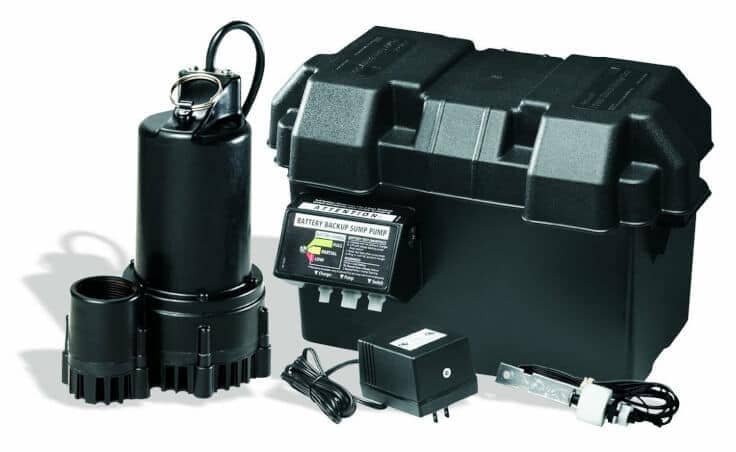
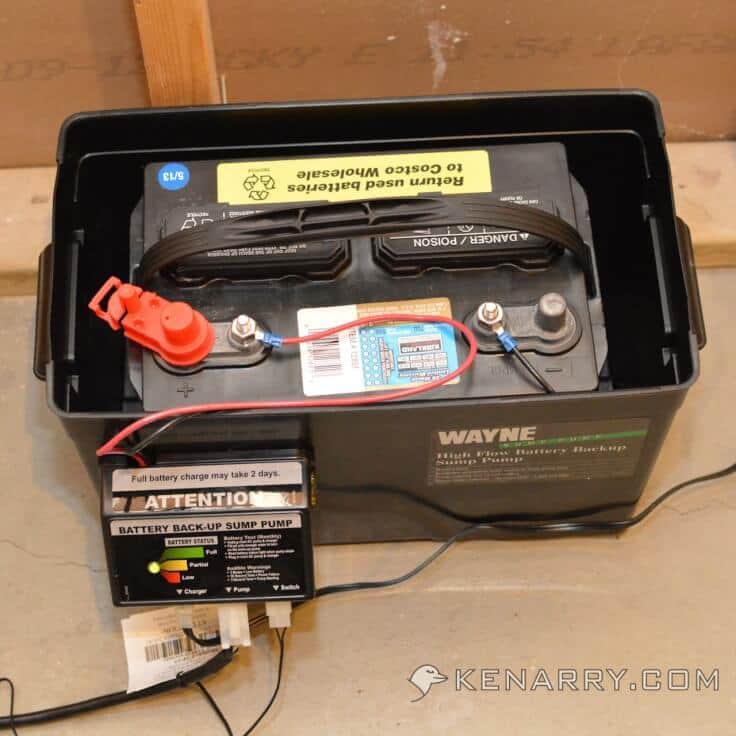
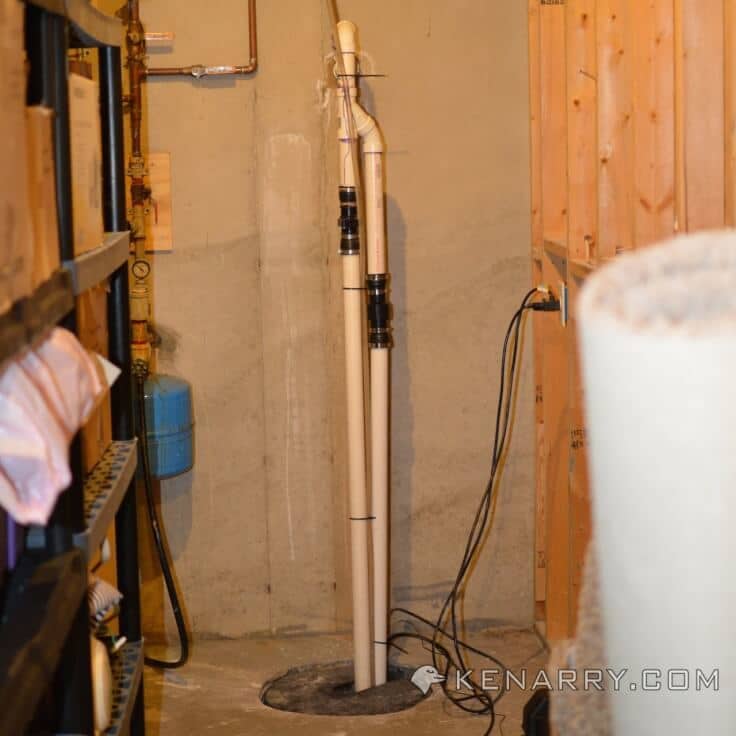
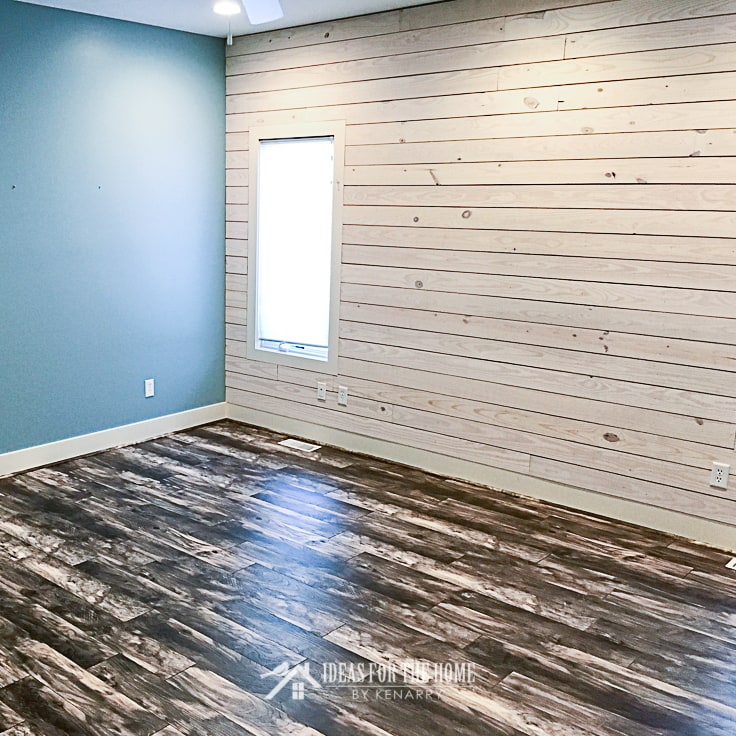
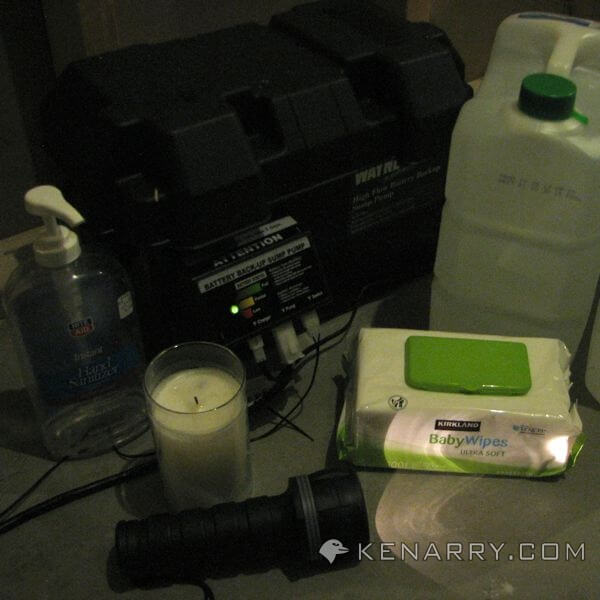
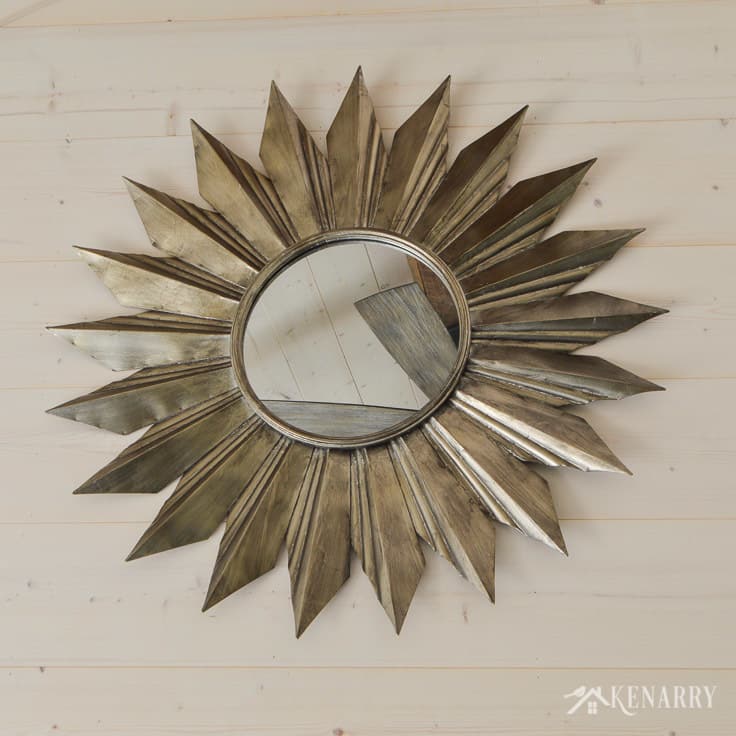
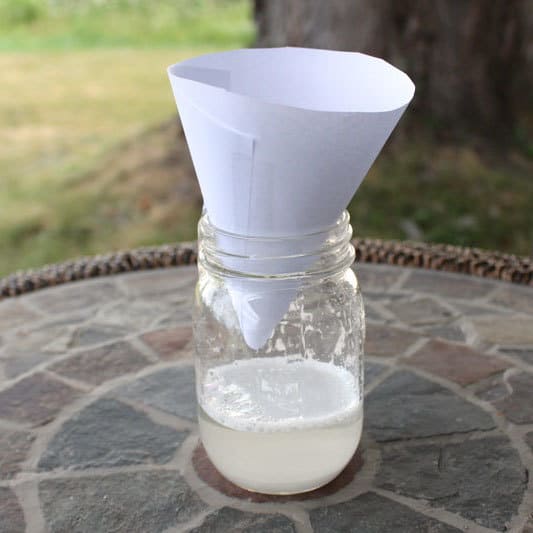

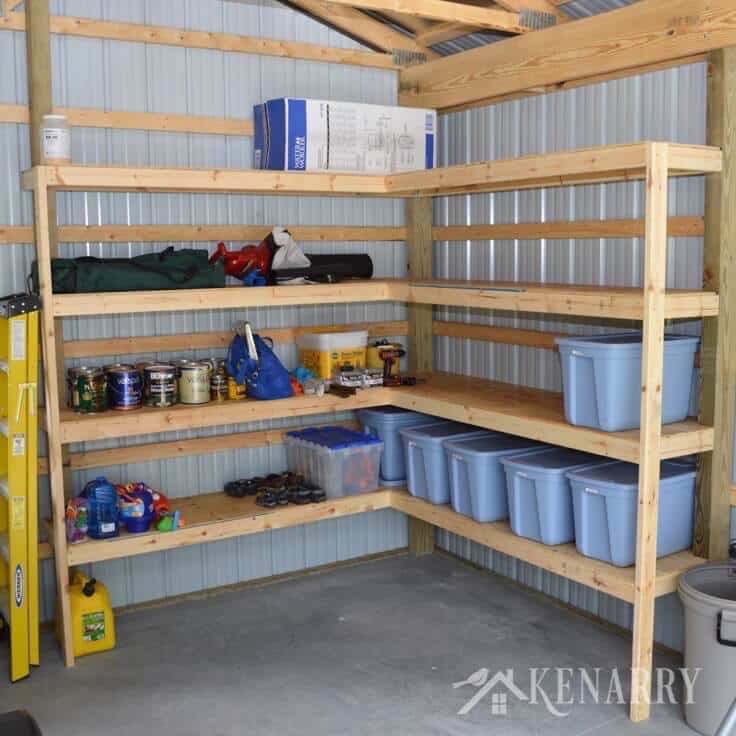
Thanks for laying out all the options so clearly and for thoroughly explaining your choice. Will definitely keep this in mind for the future! (Dropping in from Let’s Get Real.)
Thanks for stopping by Katie! A dry basement is a happy homeowner 🙂
I tell you what, here in MI, without our pump, things would be a lot worse. We’ve waterproofed our basement and water still comes in through the washer drain and now we’ve sprung a leak where our basemenst meet as one section as added later in the homes life. So, we’ll have to address that issue asap! Thankfully, we don’t use the basement for anything but storage, canning, and the washer/dryer.
Hi Chrystal! Thank you for stopping by Ideas for the Home by Kenarry®. I feel your pain in keeping the basement dry. It becomes especially challenging when you’re dealing with older construction or foundations that have been modified. Wishing you a dry basement!
Thankfully our house was built on the original construction site with all the stones so our sump pump has never be used and it’s been 21 years! Thanks for sharing and linking up with us at the #WWDParty – have a wonderful weekend.
I’m glad to hear your basement is dry! Proper drainage done from the start will certainly help you avoid a damp basement. Thanks for stopping by and checking us out!
Where we live a sump pump is a must. There’s an area under the house that will regularly fill with ground water. I’ve replaced my sump pump several times and have dealt with burned out pumps, the float getting stuck on the side of the pit so it doesn’t move freely, and other mechanical failures. During Super Storm Sandy, we had to deal with flood waters as opposed to seeping ground water…that was scary and required a supplementary pump. Finally last year we brought a plumber in who was interested in correcting the problem instead of patching it up and thing have been working great. We still have the other pump though, just in case.
Hi Lydia – thank you for sharing your experiences! As you’ve suggested, nothing beats getting the proper drainage around and under the house. It sounds like the improvements you’ve made will help prolong the life of your sump pump.
This is a great write up. One other con for battery backup sump pumps is that they only pump as long as the battery still has charge. If the storm that knocked out your power lasts longer than the battery – that’s trouble.
As you mentioned, water powered sump pumps are not a good fit for anyone that doesn’t have dependable municipal water, but for the right homes they can be an excellent solution.
Hi Nick – thanks for the reply. That’s an excellent video showing how the water powered pumps operate. Unfortunately, for those of us on well-water, it’s not an option, but certainly something for those with a reliable municipal source to look into.
Just a note
Installed same Wayne unit and bought battery at Home Depot, battery failed just over a year and I usually cycle the pump once a month to make sure everything is functioning battery was DOA, read numerous complaints about the Watch Dog battery and everyone had the same results
Bought a Wayne Maintenance Free battery – so far no complaints
Thanks for the note Terry.
I hope the Wayne battery lasts longer for you. My Costco deep cycle battery is still going strong, so I hope I don’t run into the same trouble!